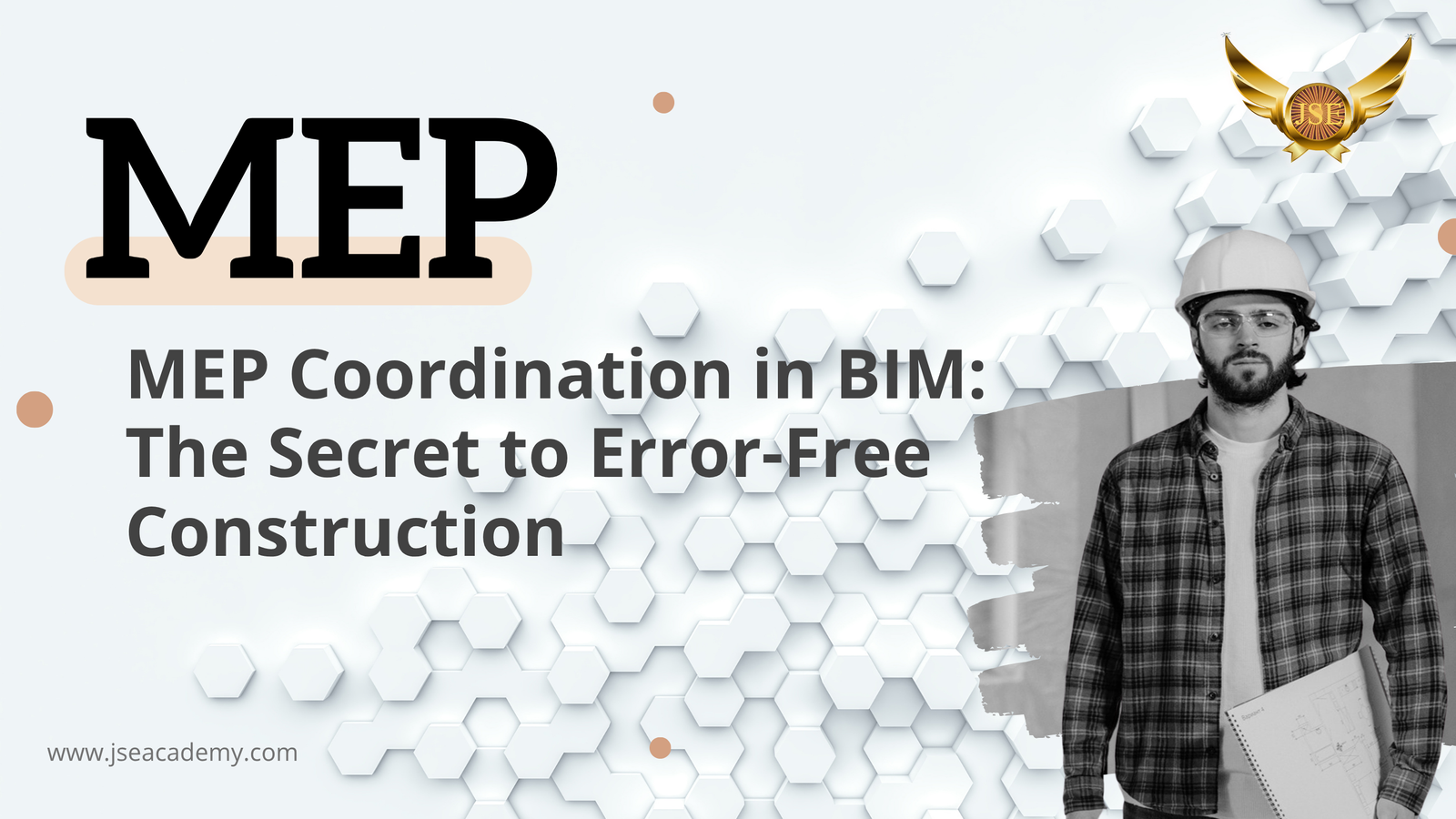In the fast-evolving construction industry, precision and collaboration are crucial to ensuring seamless project execution. One of the most effective methodologies for achieving an error-free construction process is MEP Coordination in BIM. This advanced approach integrates Mechanical, Electrical, and Plumbing (MEP) systems into a shared Building Information Modeling (BIM) environment, reducing design conflicts, enhancing efficiency, and minimizing costly rework. In today’s JSE academy blog, you will understand about MEP coordination essentials in building and the skills we offer for young engineers to grow successfully.

Why is MEP Coordination Essential in Construction?
Modern buildings are complex, housing multiple interconnected systems that must function harmoniously. Without proper coordination, clashes between MEP components and structural elements can lead to significant delays, cost overruns, and safety risks. MEP coordination ensures:
- Seamless integration of electrical, mechanical, and plumbing systems.
- Early clash detection through BIM-driven analysis.
- Optimized space utilization by avoiding system overlaps.
- Reduced construction waste by improving material planning.
- Enhanced sustainability through energy-efficient design solutions.
ALSO READ: Why Revit is a Must-Have Skill for Architects & Engineers
How Does MEP Coordination Work in BIM?
1. Clash Detection & Resolution
BIM software tools like Autodesk Revit, Navisworks, and Tekla Structures enable engineers to identify and resolve conflicts before construction begins. Clash detection helps in:
- Automatically highlighting design conflicts.
- Reducing change orders and project delays.
- Enhancing inter-disciplinary collaboration.
2. 3D Visualization & Simulation
BIM provides 3D modeling capabilities that allow architects, engineers, and contractors to visualize how MEP systems interact with structural components. Benefits include:
- Real-time collaboration between stakeholders.
- Improved decision-making with data-driven insights.
- Better understanding of spatial constraints and clearances.
3. Data-Driven Project Management
MEP coordination in BIM is not just about 3D modeling; it also involves integrating project timelines, material specifications, and cost estimation for efficient execution. Key aspects include:
- BIM 4D (Time) – Linking MEP systems to construction schedules.
- BIM 5D (Cost) – Real-time budgeting and cost control.
- BIM 6D (Sustainability) – Energy efficiency analysis for green building designs.
Who Benefits from MEP Coordination in BIM?
1. Architects & Designers
- Gain better spatial clarity for integrating MEP systems into building layouts.
- Reduce design iterations and revisions.
2. MEP Engineers & Contractors
- Detect and resolve system conflicts early in the design phase.
- Improve installation accuracy and reduce field rework.
3. Project Managers & Developers
- Streamline workflows for faster project completion.
- Ensure budget control and resource optimization.
4. Facility Managers & Building Owners
- Benefit from improved operation & maintenance (O&M) insights.
- Extend the lifecycle of building assets through digital twin integration.
The Future of MEP Coordination in BIM
You may also read: Revit MEP vs AutoCAD: Which is better for your project?
With the construction industry embracing digital transformation, the future of MEP coordination in BIM is evolving towards:
- AI-driven automation for intelligent clash detection.
- IoT integration for real-time monitoring of MEP systems.
- Augmented Reality (AR) & Virtual Reality (VR) for immersive MEP planning.
Conclusion: Enhance Your BIM Skills with JSE Engineering Academy
MEP coordination in BIM is no longer a luxury but a necessity for modern construction. By mastering MEP Revit and MEP Architecture course, professionals can ensure error-free, cost-effective, and sustainable project execution.
Do you know: What is the Difference Between MEP Coordination and MEP Design?
Join JSE Engineering Academy’s BIM training programs today! Learn MEP BIM coordination, clash detection, and advanced modeling techniques from industry experts.






